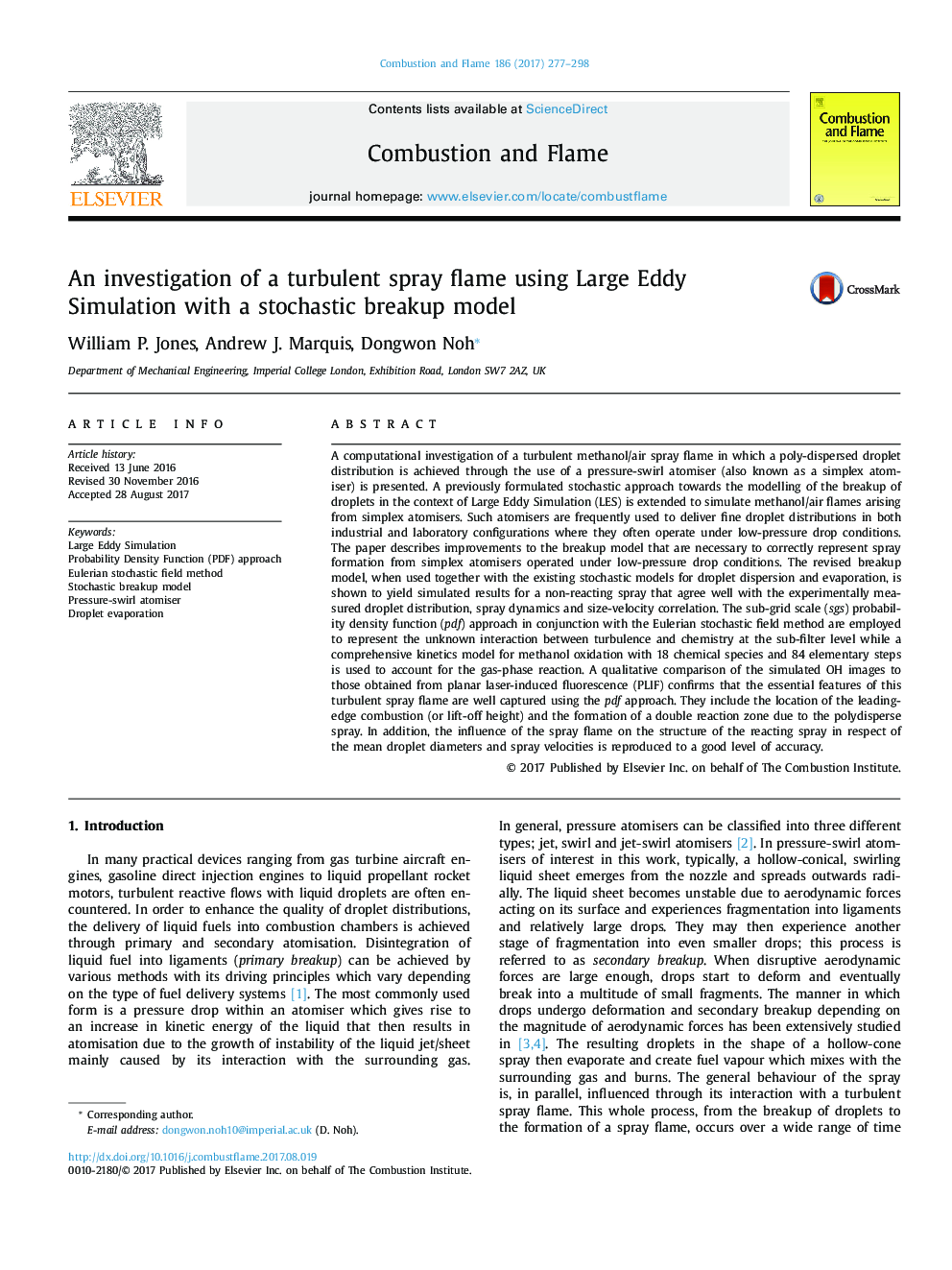| کد مقاله | کد نشریه | سال انتشار | مقاله انگلیسی | نسخه تمام متن |
|---|---|---|---|---|
| 4764362 | 1423551 | 2017 | 22 صفحه PDF | دانلود رایگان |
عنوان انگلیسی مقاله ISI
An investigation of a turbulent spray flame using Large Eddy Simulation with a stochastic breakup model
دانلود مقاله + سفارش ترجمه
دانلود مقاله ISI انگلیسی
رایگان برای ایرانیان
موضوعات مرتبط
مهندسی و علوم پایه
مهندسی شیمی
مهندسی شیمی (عمومی)
پیش نمایش صفحه اول مقاله

چکیده انگلیسی
A computational investigation of a turbulent methanol/air spray flame in which a poly-dispersed droplet distribution is achieved through the use of a pressure-swirl atomiser (also known as a simplex atomiser) is presented. A previously formulated stochastic approach towards the modelling of the breakup of droplets in the context of Large Eddy Simulation (LES) is extended to simulate methanol/air flames arising from simplex atomisers. Such atomisers are frequently used to deliver fine droplet distributions in both industrial and laboratory configurations where they often operate under low-pressure drop conditions. The paper describes improvements to the breakup model that are necessary to correctly represent spray formation from simplex atomisers operated under low-pressure drop conditions. The revised breakup model, when used together with the existing stochastic models for droplet dispersion and evaporation, is shown to yield simulated results for a non-reacting spray that agree well with the experimentally measured droplet distribution, spray dynamics and size-velocity correlation. The sub-grid scale (sgs) probability density function (pdf) approach in conjunction with the Eulerian stochastic field method are employed to represent the unknown interaction between turbulence and chemistry at the sub-filter level while a comprehensive kinetics model for methanol oxidation with 18 chemical species and 84 elementary steps is used to account for the gas-phase reaction. A qualitative comparison of the simulated OH images to those obtained from planar laser-induced fluorescence (PLIF) confirms that the essential features of this turbulent spray flame are well captured using the pdf approach. They include the location of the leading-edge combustion (or lift-off height) and the formation of a double reaction zone due to the polydisperse spray. In addition, the influence of the spray flame on the structure of the reacting spray in respect of the mean droplet diameters and spray velocities is reproduced to a good level of accuracy.
ناشر
Database: Elsevier - ScienceDirect (ساینس دایرکت)
Journal: Combustion and Flame - Volume 186, December 2017, Pages 277-298
Journal: Combustion and Flame - Volume 186, December 2017, Pages 277-298
نویسندگان
William P. Jones, Andrew J. Marquis, Dongwon Noh,